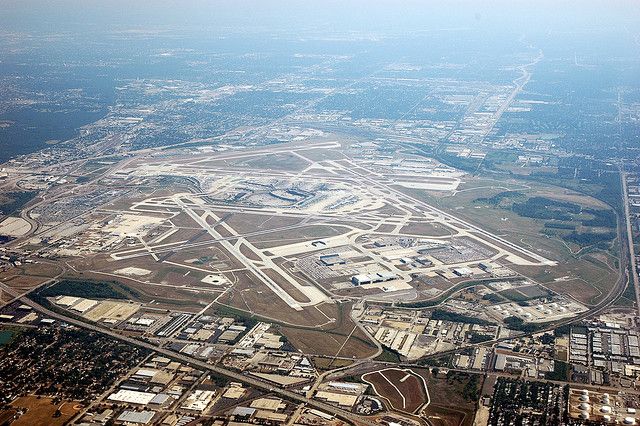O’Hare International Airport is a national icon. Its delays and size are legendary, and, while no longer the busiest (it ceded that title to Atlanta in 2005), it remains a critical cog in the US air transport system and a constant source of controversy in Chicago.
Talks to expand the airport have been on going for decades. Mayor Richard M Daley and numerous local business groups support a $15 billion plan, originally proposed in the early 1990s, to realign the airport’s seven runways and build a new western terminal. Communities and residents around the airport oppose the plan for numerous reasons, including its acquisitions of hundreds of residential properties and the noise additional flights would create. Others oppose it on account of its sheer cost, which is more than double the original $6.6 billion price tag, and argue that a new suburban airport near Peotone would serve the Chicago region better.
But in two decades of debate, little thought has been put into making O’Hare more a part of the community. Clare Lyster, principal at the CLUAA architecture and urbanism studio in Chicago, recently came up with an innovative proposal to remake an expanded airport into a hub of the Chicago suburbs. Under her proposal, the 3.5-mile wide terminal belt that stretches across the airport created under the mayor’s plan would be remade into three urban zones. To the east, where terminal 5 currently sits, a transportation hub including subway, commuter rail and high-speed rail as well as hotel and convention facilities is envisioned. In the middle, a literal green zone with a below-grade 45-acre public park above subterranean parking garages is proposed adjacent to the existing domestic terminal complex. And to the west, a new terminal and gateway to Chicago’s western suburbs that would include space for new schools, civic institutions and public spaces.
“The expansion program [as currently envisioned] has no real impact on how we perceive the airport,” said Lyster in an interview. “My proposal looks at how we can leverage the investment to make O’Hare more a part of the city.” She uses local schools as an example. By moving them into the terminal zone, people would be drawn into the airport for non-travel related reasons, potentially using other urban facilities there and allowing millions of dollars currently earmarked for soundproofing activities to be used instead for building things like new schools and libraries. To date, the O’Hare Noise Compatibility Commission reports that more than $500 million has been spent on soundproofing hundreds of schools around the airport.
Lyster’s proposal is a good concept but far from a reality. The expansion of O’Hare is already well over budget and key elements of the original plan, including the new western terminal, have been indefinitely postponed. Even if funding was found to design and build the three zones, it’s hard to gauge what the reaction of local residents would be after the decades they have spent opposing the expansion. But maybe, just maybe, a proposal as drastic as Lyster’s – a radical re-envisioning of O’Hare – is what’s needed to garner support for such a plan.
“My proposal could make living beside an airport better, not worse,” said Lyster. Something most of us would agree is a good thing.















